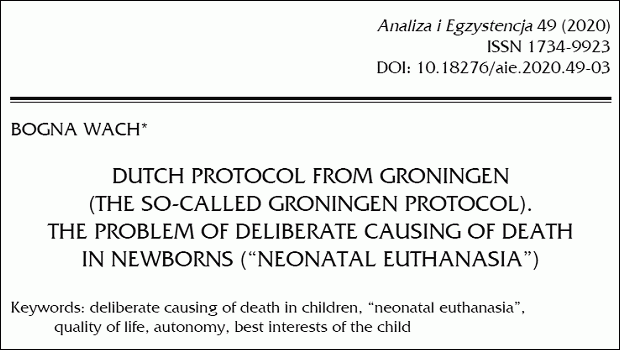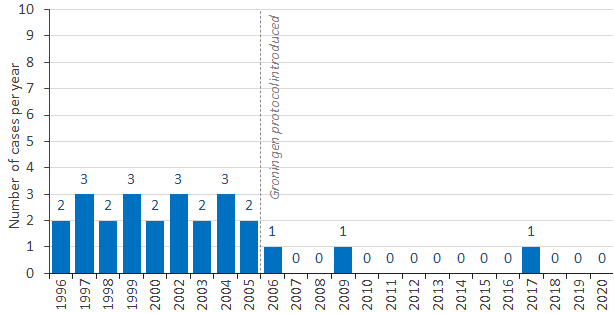Dutch Groningen Protocol deaths remain extremely rare

Back in 2016 I authored a very detailed, evidence-based analysis of the 2006 Dutch Groningen Protocol, which stipulates detailed steps to be taken in respect of late-term abortions and euthanasia for neonates suffering in extremis from abnormalities that contra-indicate their short-term survival. In it, I revealed a major viral distribution of misinformation about the supposed euthanasia of 650 babies a year in the Netherlands, rapidly spread by religious anti-VAD lobbyists. The table describing the trail of religious viral "infection" spans multiple pages.
Ideological opposition to the Groningen Protocol remains, and even gets "scholarly" attention. For example, in 2020, a lengthy anti-Groningen narrative (35 pages) by Bogna Wach was published in Analiza i Egzystenja, a journal of the Polish University of Szczecin.1 In it, the author uses moderate-sounding scholarly language to paint a dark picture of the Protocol. She conflates a range of issues that are clearly distinct, and references data prior to the Protocol to criticize it:
“In the case of applications of the Protocol, the doubts are all the greater because the previous practice shows that the diseases suffered by the patients under the procedure were not terminal (spina bifida and epidermolysis bullosa).”
— Bogna Wach
As I report in my detailed analysis, indeed spina bifida was one of the reasons prior to the Protocol. But not since the Protocol. Wach also demonstrates her ideological ignorance and bias: epidermolysis bullosa, in its more virulent forms, can indeed be fatal.
Did Wach refer to any reports of the Commission for LZA-LP, the body charged with the responsibility to collect, examine and analyse case reports of late-term abortion and neonatal euthanasia? No. Did she report that the rate of neonatal euthanasia in France, where voluntary assisted dying (VAD) and neonatal euthanasia remain illegal, is considerably higher than in the Netherlands? No.
Ideologists opposing improved medical practice often make shrill, generic pronouncements, with significant disregard for the actual evidence.
This week, the Commission for LZA-LP released its annual report covering the year 2020. And here are the results: again, no cases for the year.
 Figure 1: Netherlands neonatal euthanasia cases by year
Figure 1: Netherlands neonatal euthanasia cases by year
As I reported in my 2016 detailed analysis, 22 cases of neonatal euthanasia were reported in the nine years prior to the Groningen Protocol. Actual yearly figures are no longer available, so I've allocated those 22 cases evenly across those years. And during the Protocol's development and adoption (2006) there was a single case. Since (including) 2006 there have been just three cases. Not three cases a year: three in total.
Those cases were in relation to severe epidermolysis bullosa causing extreme suffering for the neonate, whose survival prognosis was measured in days or weeks.
Conclusion
The Groningen Protocol has achieved the exact opposite of the claims of anti-VAD lobbyists. While they shrilly curried FUD (fear, uncertainty, and doubt) about an expected rise in the "killing off of 'problematic' babies", the evidence amply reveals a great improvement in medical practice.
The Dutch have shown the rest of the world what happens when a light is shone in the dark corners of ethically difficult medical practice.
-----
- Wach, B 2020, 'Dutch protocol from Groningen (the so-called Groningen Protocol). The problem of deliberate causing of death in newborns (“neonatal euthanasia”)', Analiza i Egzystencja, vol. 49, pp. 53-87.
